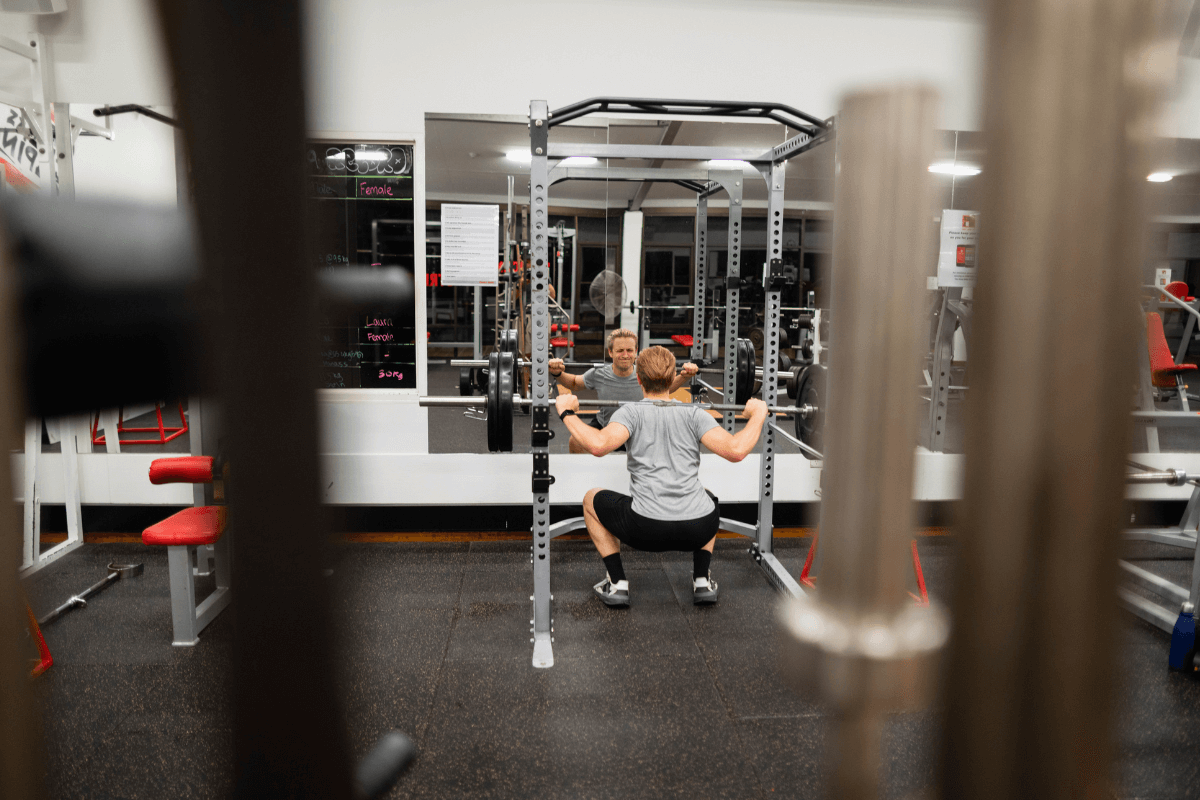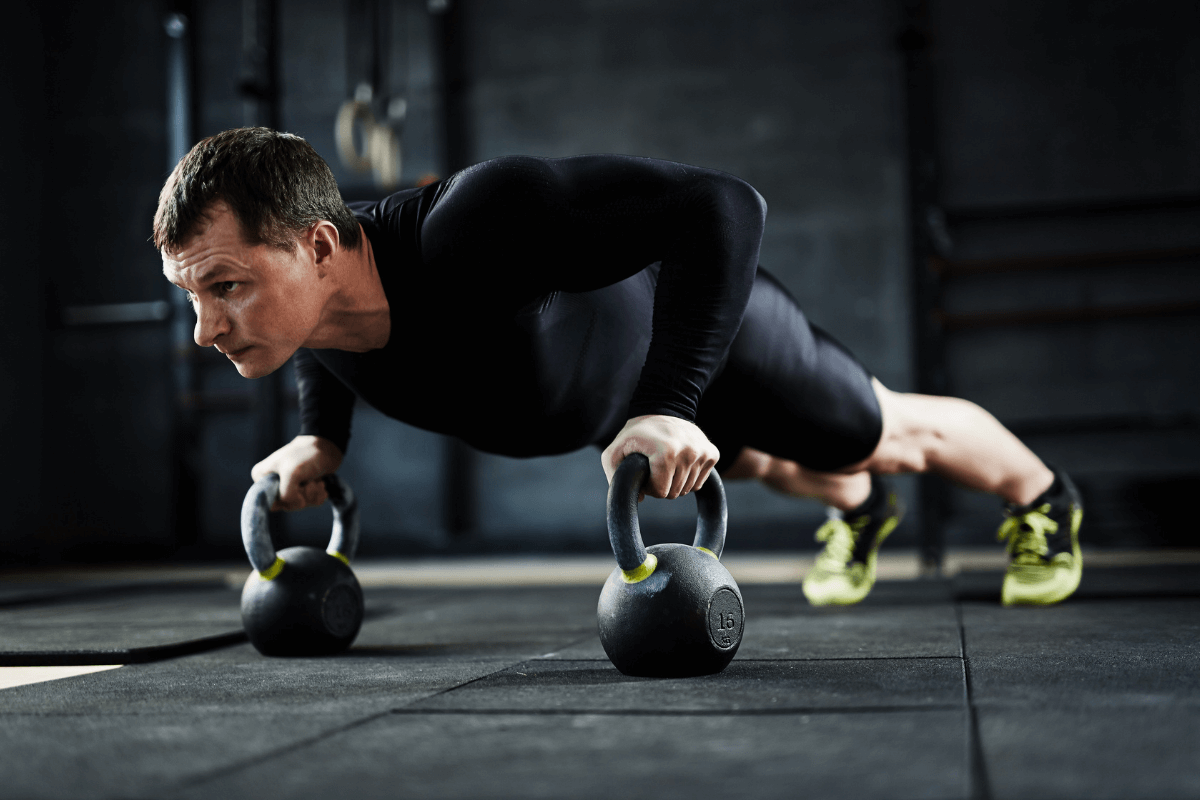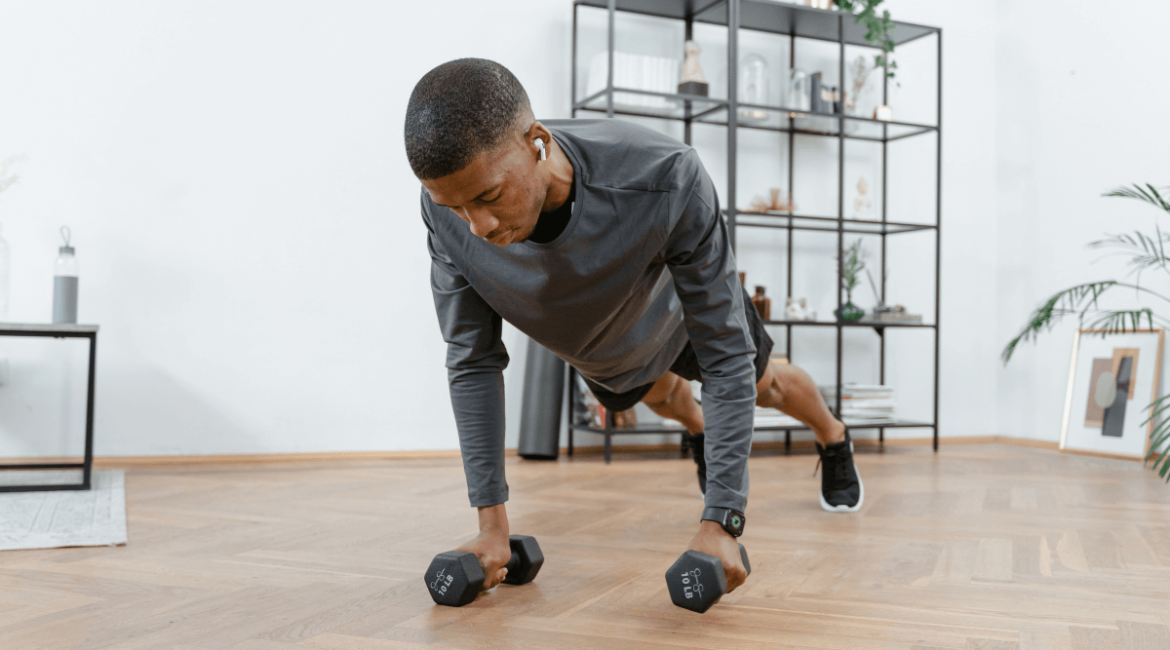Absolutely, pushup is one of indeed fantastic exercises. Yet, once you’ve mastered the technique and can effortlessly crank out sets of more than a dozen reps, you might start pondering how to spice up your workouts. Because, let’s face it, doing the same old pushup routine can become a bit mundane after a while. Why don’t think about other variations?
Sure, you can increase the number of reps you do, but that might only get you so far. Plus, sticking solely to standard pushups means you’re only working certain muscles in the same way each time. If you’re aiming for a well-rounded workout, you’ll need to add some variety beyond the traditional pushup.
Many folks view pushups as a beginner-level exercise, and rightfully so. As you progress in your fitness journey, you’ll likely seek out more challenging exercises to keep pushing your limits. However, there are instances where you might find yourself in less-than-ideal circumstances, like being away from your usual gym setup or having limited time to exercise.
In those situations, a bodyweight-only workout featuring pushups might be your best bet. But fear not! Pushups don’t have to be your only option when you’re in a pinch. With a bit of know-how, there are plenty of ways to mix things up and get a full-body workout using just your bodyweight.
In this part 2 of “Pushup variations to boost your strength” blog, we will dive into more interesting facts with the rest of the list of pushup variations that you’re waiting for!
About pushup in general
Muscles participating in pushup
When you do pushups, it’s mainly the upper body muscles that do the heavy lifting. These muscles include:
- The chest muscle group, which consists of the pectoralis major and pectoralis minor.
- The shoulder muscle group, made up of the deltoid major and deltoid minor.
- The upper and middle back muscles, including the latissimus dorsi, rhomboids, and trapeze muscles.
- The biceps, found at the front of the upper arm.
- The triceps, located at the back of the upper arm.
- The serratus anterior, a muscle on the side of the chest beneath the upper arm.
However, pushups also engage many other muscles in the body to maintain a rigid plank position. These muscles include:
- The lower back muscles.
- The abdominal, or core muscles.
- The gluteus maximus and medius, which are the muscles in the buttocks.
- The leg muscles, such as the hamstrings, quadriceps, calf, and shin muscles.
By working together, these muscles help you perform pushups effectively and strengthen various parts of your body.
Benefits of doing pushup
Pushups offer a wide range of benefits for both physical and mental health. Here’s a detailed look at the advantages of incorporating pushups into your workout routine:
- Upper Body Strength: Pushups target chest, shoulder, and arm muscles, enhancing strength and definition.
- Core Engagement: They engage core muscles, improving stability and strength.
- Functional Fitness: They mimic everyday movements, boosting functional strength.
- Joint Health: Pushups promote joint stability and mobility.
- Cardiovascular Benefits: High-intensity pushup workouts elevate heart rate, enhancing cardiovascular health.
- Mental Toughness: Pushups build discipline and resilience.
- Weight Management: They burn calories and aid weight loss when part of a balanced routine.
- Posture Improvement: Proper form strengthens muscles supporting the spine, enhancing posture.
- Muscle Endurance: Pushups increase muscular endurance, delaying fatigue during activities.
Pushup variations to boost your strength (Part 2)
Post Pushup
This exercise serves as a stepping stone towards the challenging single-arm pushup, making it a great substitution or initial progression. To perform the Post Pushup, you’ll need a sturdy anchor point like a pole or squat rack.

What is squat rack? A squat rack is a piece of gym equipment made for strength training. It’s meant to hold weights while you do squats. Its main job is to let you add more weight to your squats over time. This means you can lift heavier weights than you could without the squat rack, helping you get stronger.
Keep in mind all the essential form cues from the standard pushup, except you’ll be using only one arm. It’s crucial to focus on bracing your core to resist rotational forces and maintain good body control. While the post provides some support, you’ll need to engage your obliques to stabilize your body effectively.
Here’s how to do it:
- Start in a standard pushup position beside a sturdy post or pole.
- Grip the post securely with one hand.
- Lower yourself down into a pushup while holding onto the pole.
- And focus on engaging your abs and glutes to keep your hips square.
- Push off the floor with your working arm to return to the starting position.
Typewriter Pushup
Typewriter Pushup adds an extra challenge to the Archer Pushup by incorporating lateral movement.
Here’s how to do it:
- Set up in the same position as you would for the Archer Pushup.
- Instead of just lowering to one side and pushing back up, remain close to the ground and shift horizontally to the other side.
- Work on gradually increasing the range of motion until you can smoothly transition from side to side.
Handstand Pushup

This challenging variation puts the focus on your shoulders instead of your chest, so it’s important to skip this one if you have any shoulder issues.
Here’s how to do it:
- Find a wall and kick up into a handstand position.
- If you struggle with this, it’s best to avoid attempting the Handstand Pushup.
- Adjust your hand placement to be just wider than shoulder-width apart.
- Brace your core and squeeze your glutes to maintain balance.
- Lower your head down just in front of your hands, stopping just short of the floor or lightly tapping it.
- If you can’t perform the reps with slow and controlled movements, skip this variation to avoid the risk of injury.
- Push off the floor and extend your elbows back to the starting position.
Loaded Pushup
While this variation may seem to break the bodyweight theme, it’s a great way to add intensity to your pushup workout, even in the least gym-friendly setting. All you need is something heavy to place on your back.
Here’s how to do it:
- Get into a standard pushup position, with a weight plate or another heavy object nearby.
- Have a partner place the weight squarely on your back, or use one arm to position it as you get into position.
- Make sure the weight is secure before starting the reps.
- Perform as many reps as prescribed while maintaining tension to keep the weight in place.
- Once you’re done, carefully remove the weight to avoid any injuries.
Partner Tension Pushup
This variation requires a partner to help maintain proper form and posture, particularly as fatigue sets in during a set. It’s essential to push with control and not disrupt your partner’s balance.
Here’s how to do it:
- Begin in a standard pushup position and start performing reps, focusing on creating tension in your shoulders, abs, and glutes.
- As you continue your set, your partner should gently push and prod to ensure you’re maintaining full-body tension.
- After completing the prescribed number of reps, switch roles with your partner to provide mutual support and feedback.
Plyo Pushup

This pushup variation which adds a dynamic, explosive element to your bodyweight training routine. This exercise requires some advanced strength and coordination, so beginners may want to start by using a bench or platform before progressing to the floor.
Here’s how to do it:
- Place your hands on a box or bench, positioning yourself slightly away from it to create a right angle between your upper arms and torso.
- Engage your glutes and abs tightly.
- Bend your elbows to lower yourself down into the pushup, keeping your elbows close to your torso.
- Push through your hands forcefully to “explode” off the bench, extending your elbows as you propel yourself away from the bench.
- As your hands make contact with the bench again, lower yourself back down in a controlled manner before repeating the movement.
Superman Pushup
Inspired by the superhero himself, this variation is considered one of the toughest types of pushups you can attempt.
Here’s why it’s worth the effort:
- The Superman pushup builds power in a unique way that many other variations don’t.
- It requires a high level of skill and strength to execute, making it an impressive feat to accomplish.
- While it may have a high barrier to entry, mastering the Superman pushup is incredibly rewarding.
- Plus, it’s one of the coolest-looking stunts you can perform in the gym without compromising safety.
To work your way up to mastering the Superman pushup, we recommend following a progression plan to gradually increase your strength and skill. With dedication and persistence, you’ll be able to conquer this challenging variation and reap the benefits of enhanced power and athleticism.
Summary
In the two parts of our blog on Pushup variations to boost your strength, we’ve introduced you to a total of 14 different ways to amp up your pushup game. Each variation offers its own unique challenge and benefits, helping you target different muscle groups and improve your overall strength and fitness levels. Let’s recap the variations we’ve recommended:
- Close-Grip Pushup
- Incline Pushup
- Deficit Pushup
- Mixed-Style Close-Grip Pushup
- Spiderman Pushup
- Archer Pushup
- Incline Archer Pushup
- Post Pushup
- Typewriter Pushup
- Handstand Pushup
- Loaded Pushup
- Partner Tension Pushup
- Plyo Pushup
- Superman Pushup
Whether you’re looking to challenge your upper body, engage your core, or add explosive power to your workouts, these variations have got you covered. Experiment with different variations to keep your workouts exciting and to continue progressing towards your fitness goals.
With dedication and consistency, you’ll soon master these pushup variations and unlock new levels of strength and athleticism. And if you need a more detailed guide about pushup variations, check out this YOUTUBE video!


Leave a reply